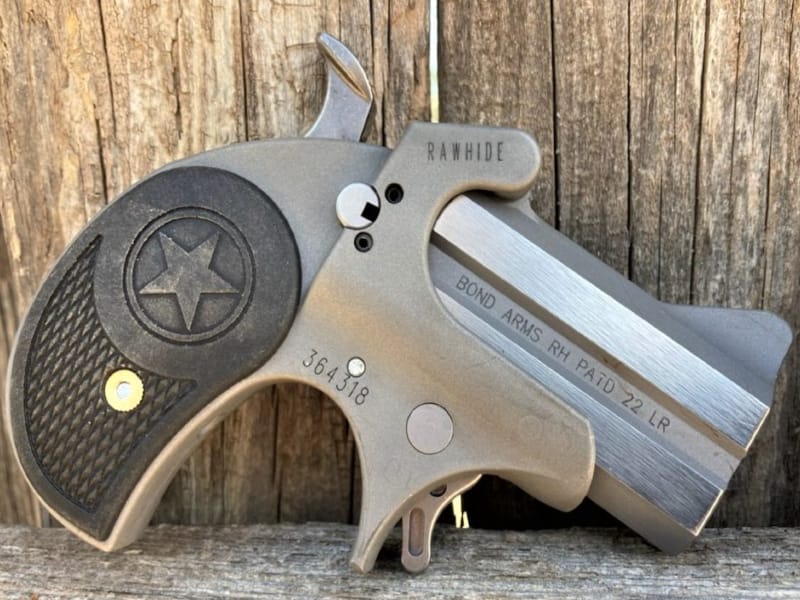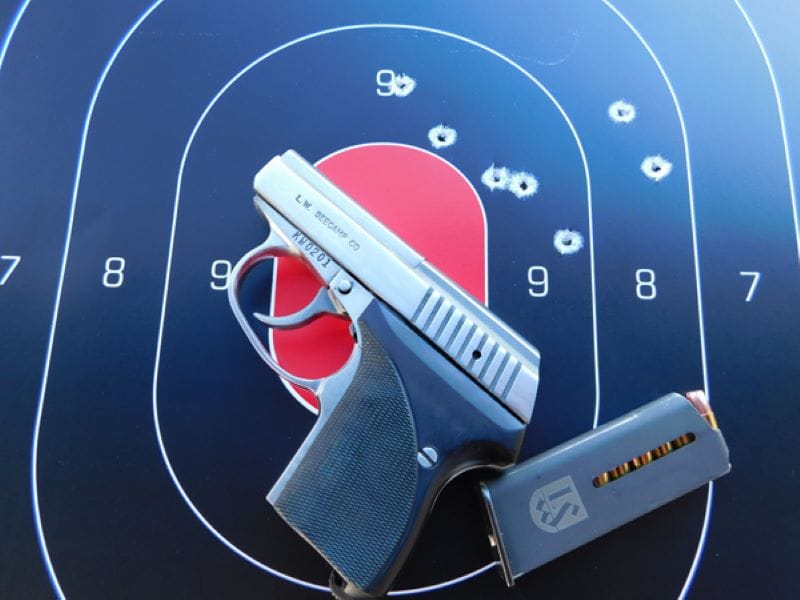As a kid who grew up reading gun magazines in the late 1990s and early 2000s, I was under the impression dang near anything smaller than an M1911 Government was nearly impossible to shoot accurately. I’m not sure if these old magazines employed rifle guys and handed them pistols, or they just couldn’t shoot. Anyway, a common theme in the early to mid-2000s, the term “belly gun” became a popular way to describe a recent spat of pocket-sized .380 ACPs.
If a gun was called a belly gun, that meant that it was only accurate enough to shoot someone after you shoved the gun into their belly. Historically, it’s been a term to describe ultra-small firearms that are often difficult to shoot at ranges as close as seven yards. The origin is unclear, but it was traditionally applied to micro-sized guns that were accurate at point-blank range only. Guns like the Colt Derringers, or derringers in general, often fired unpowered rounds.

These guns were tough to shoot even inside of close ranges, but they also chambered big, fat, slow cartridges. Some of these bullets moved at less than 500 feet per second. They had to be fired at close range because they lost speed quickly. These days the term seems to apply to any gun a writer can’t shoot straight. These aren’t belly guns. You just can’t shoot.
The Misuse of the Term Belly Gun
Coming into the early to mid-2000s, the gun industry was hit by a wave of concealed-carry firearms. People wanted smaller and smaller guns, and companies like KelTec delivered guns like the P32 and P-3AT in the late 90s and early 2000s. Ruger developed the LCP in 2008, Sig introduced the P238 in 2009, and S&W introduced the Bodyguard .380 in 2011. That’s just a small example. I’m leaving out Taurus, Kahr, and Diamondback and their respective micro-sized pistols.
These guns often had small sights and heavy DAO triggers, and obviously, with a small gun, the sight radius is rather short. Pair all this with some harsh recoil and a small grip, and guess what? You get a gun that can be difficult to shoot.

However, that doesn’t make it a belly gun. For someone who doesn’t train, practice, or dry fire, it might certainly seem that way. However, with some practice, you can be quite competent with these weapons. As long as they have sights, they can be fairly easy to shoot, and I know this because I’m only a mediocre shooter and can hit small targets at fairly distant ranges with these guns.
My examples are the P-3AT, the P-32, and Ruger LCP 2. They come in .32 ACP, .380 ACP, and .22 LR. They have all been declared belly guns by someone out there. Google the name of the gun with the term belly gun, and you’ll find plenty of examples from mainstream publications.
Doing Work With Belly Guns
With my pocketful of miniguns, I went to the range with each of them and shot at various ranges under various time constraints. I started at seven yards with a draw, and in around two seconds, I could draw from my pocket, get the gun on target, and land at least one round accurately and consistently. The target was a 10-inch steel gong. With each pistol, I could hit that hanging bastard with relative ease. I stepped back to 10 yards and repeated the process, with some draws going over two seconds, but not all, and my accuracy remained consistent.

Even when it came to firing multiple shots at both ranges, I could still put lead on target and do it quickly. I backed off to 25 yards and was still able to hit the 10-inch gong, albeit a bit slower. I replaced it with a steel IPSC target and let it have it. On the larger target, there were no issues hitting the target.
You could argue that it’s just me, so I let my wife try. She preferred the LCP in .22LR at first and, with some practice, made consistent hits in short order. Even out to 25 yards, she hit more than she missed. When we upgraded to the .32 ACP, she still made consistent hits, although, with the .380 ACP, she tapped out quickly.
How To Shoot Belly Guns
To shoot these guns well, you need a consistently tight grip to keep them on target. You also need a bit of dry fire practice to learn how to obtain the sights quickly with a good sight picture. I used a set of Birchwood Casey paint pens to liven up my sights to make them easier to see, and I don’t regret it.

These little guns are capable of a lot more than most shooters give them credit for. They don’t care for human error, but if you can get the practice in, they can be plenty capable beyond point blank. They demand you spend more time at the range and dry firing at home. Practice is essential with these guns.
What about real belly guns?
Belly guns do exist to this day. There are plenty of guns that are nearly impossible to shoot well beyond average ranges. I would classify the Seecamp pistols as belly guns. They completely lack sights or any reference for aiming. Guns with trench sights like the LifeCard also don’t seem to be great at ranges beyond arm extension. The Switch from Standard Manufacturing lacks sights and likely would be tough to shoot even at seven yards.

These guns do exist, but not every pocket pistol falls into the belly gun genre. A little gun like the LCP is tougher to shoot than that Government sized 1911, but you don’t have to be a pro shooter to manage one. If you don’t have the time, patience, or want to train with these guns, there are certainly better options.
I like to keep one around for deep concealment, but like a lot of shooters, they aren’t my main squeeze. Still, I get out there and train and encourage others to do the same. These guns are only belly guns if you can’t shoot worth a dang. So learn to shoot!

